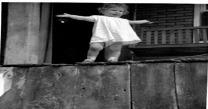A few years back at one of the quilt shows we had locally, a person who was enjoying the art quilts on display at the Wedding Oak Winery was asking me which of the quilts was hand made and which were made on a machine. This may sound like a simple question, but it is not. I explained that very few quilts are totally made by hand these days, as in hand-pieced then hand-quilted, although it does happen. The normal process of making a pieced quilt these days is that someone uses their hands with some tools such as ruler and rotary blades to cut out their quilt pieces, they match the pieces up by hand and use their hands to guide a pair of pieces through a sewing machine to join them together. Then they sew that pair of pieces to another pair, and those to another set and so on to create a block. Next, the blocks are matched and hand-guided through a machine to attach together to create a quilt top. Then Who Makes Your Clothes?
the top, batting, and backing are layered up. If they are machinequilted, they can be hand-guided through a sewing machine, or a long-arm machine can be handguided over the quilt, or, in some cases, the long-arm machine can be guided by a computer. Finally, the quilt must be bound, which means someone cuts binding, guides the quilt and binding under a machine to sew one edge on, then usually sews the other edge by hand with a needle and thread. So, now you tell me: Is any quilt made by machine?
This extends to every stitch of clothing you wear. Someone used one tool or another along with their hands to spread the fabric, cut out the pattern pieces, match the pieces of fabric together, guide them through various sorts of sewing machines, iron them, clip off loose threads, fold them, and pack them away to be shipped to your store.
My husband was looking at a catalogue this morning that had shirts for $110. The other day I bought a t-shirt at a local outlet of a chain store for $7. Both of those shirts were made by hands using tools. It would be nice to think that the people who made the more expensive shirt were paid more that those who made the cheap shirt, but I doubt that is the case.
When I was much younger, the only way I could afford the kinds of clothes I liked was to make them myself. In the past few years, I have returned to making my own clothes and am steadily building up a hand-made wardrobe. You can bet that I take good care of the clothes that I have made, whether it was from the $1 per yard Indian cotton I happened to find, or the $35 per yard Harris tweed I bought in Scotland. I know what went into turning that fabric into a garment. Think about that the next time you put on a garment—every one of them was made by human hands.

